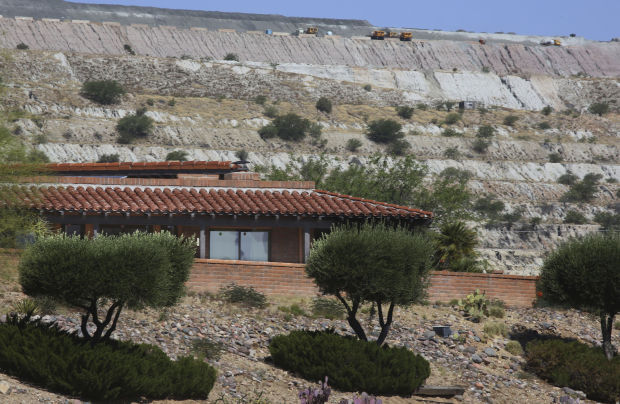Researchers at Arizona’s three universities will explore ways to repurpose billions of tons of copper mine tailings under a $3.6 million grant approved by the Arizona Board of Regents.
Led by a University of Arizona scientist, researchers plan to assess the metal content from the mining waste rock in search of critical elements such as lithium, which are used in everything from cell phones to electric vehicles and pacemakers, the Regents said.
The interdisciplinary project will include 13 faculty and staff in nine departments across the UA, Arizona State University and Northern Arizona University, who will partner with the State Mine Inspector and mining community to find new ways to reuse copper tailings.
Isabel Barton, an assistant professor in the UA Department of Mining and Geological Engineering, is serving as principal investigator for the Regents’ research grant.
The past century of mining in Arizona has led to 17.5 billion tons of copper tailings, which is usually pulverized to the size of fine sand, according to the State Mine Inspector.
And copper mining is the biggest contributor to the estimated 282 billion tons of mine tailings worldwide, at 46%, according to the industry-sponsored Global Tailings Review.
“The extraordinary volumes of leftover rock from copper mining make reprocessing copper tailings a world-class challenge and opportunity for Arizona,” Barton said. “This large-scale interdisciplinary project represents a substantial first step toward making use of a massive, but undeveloped, potential resource.”
Copper is one of the most economically important metals mined in Arizona, the U.S. leader in copper copper production, the Regents said, noting that researchers estimate the copper industry will add 200 million tons of copper tailings annually.
Arizona State Mine Inspector Paul Marsh said copper tailings in Arizona are a potential secondary source of metals and minerals critical to the economic and national security of the United States, while tailings reuse could also help reduce air and ground water pollution.
Researchers and entrepreneurs worldwide have been studying ways to repurpose mine tailings and mitigate their environmental impact.
Last year, a Tucson-based startup was named one of two finalists in an international competition to create new technologies to reuse mine tailings.
Auxilium Technology Group, founded by entrepreneur and chemist Abraham Jalbout and three University of Arizona faculty members, won a $300,000 award to build a demonstration plant to produce an insulated foam product from tailings, as part of a technology challenge sponsored by Australian mining giant BHP.
The race is on to produce more lithium in the United States. The U.S. will need far more lithium to achieve its clean energy goals, and the industry that mines, extracts and processes the chemical element is poised to grow. Although lithium reserves are distributed widely across the globe, the U.S. is home to just one active lithium mine, in Nevada. This element is critical to the development of rechargeable lithium-ion batteries that are seen as key to reducing climate-changing carbon emissions created by cars and other forms of transportation.





